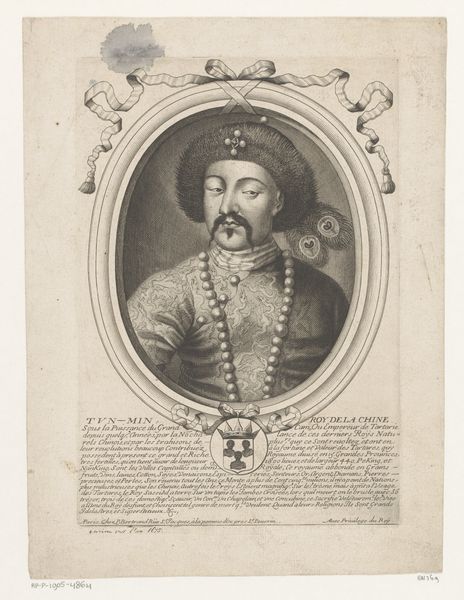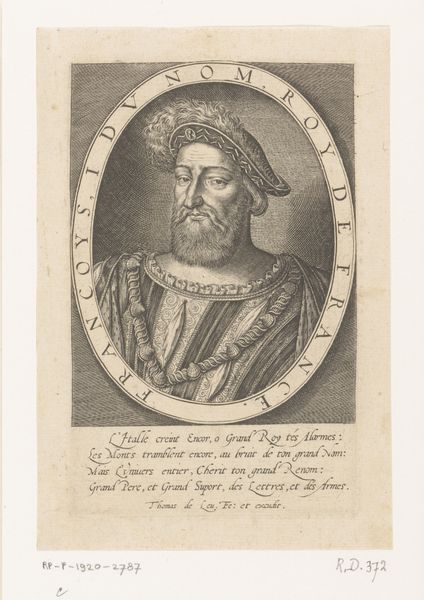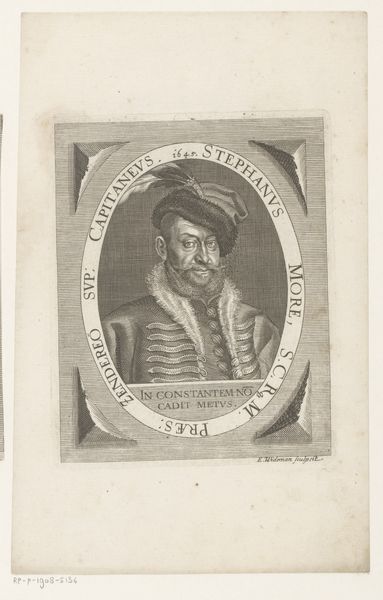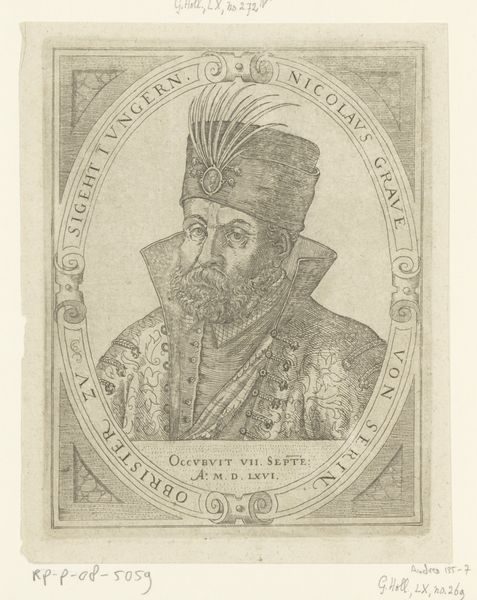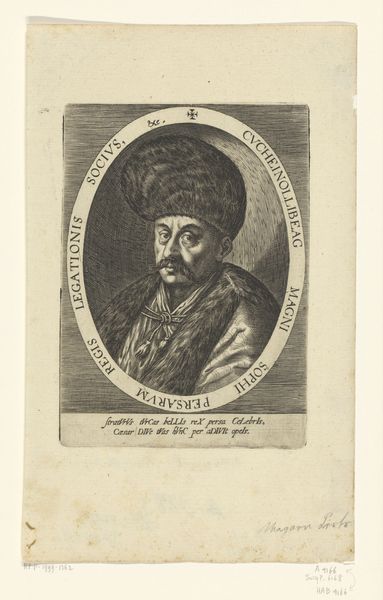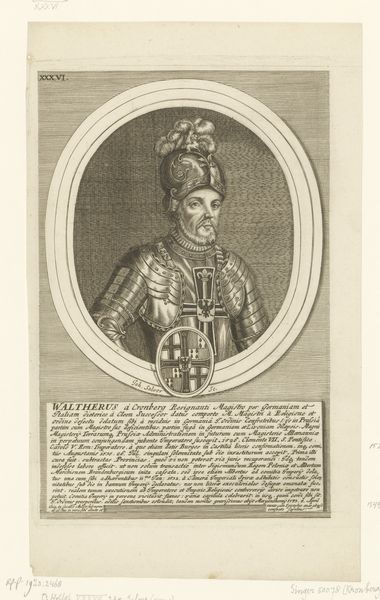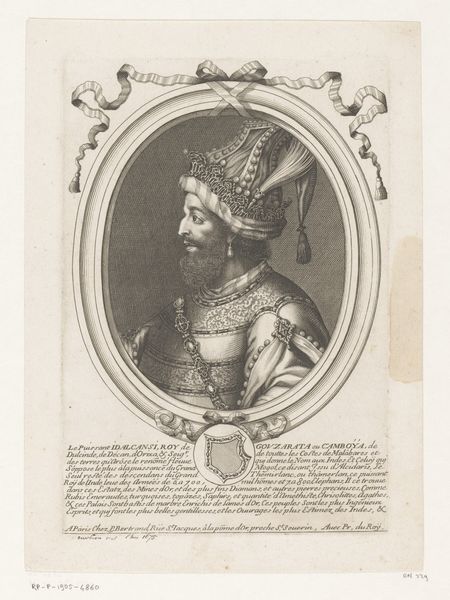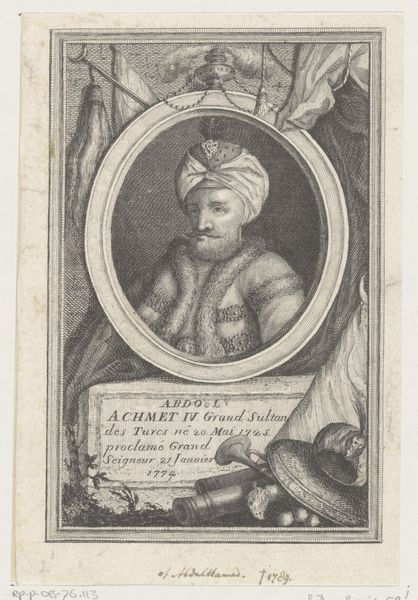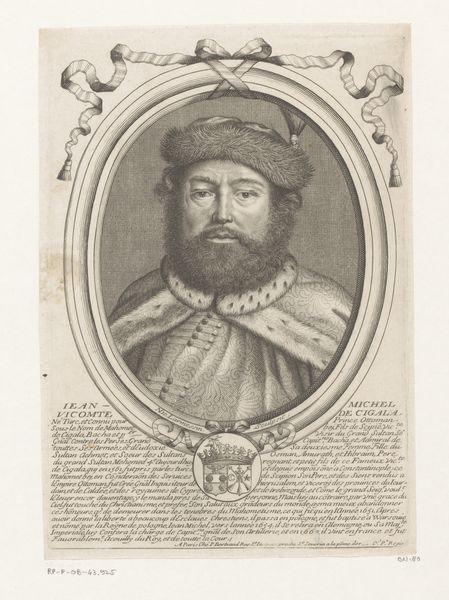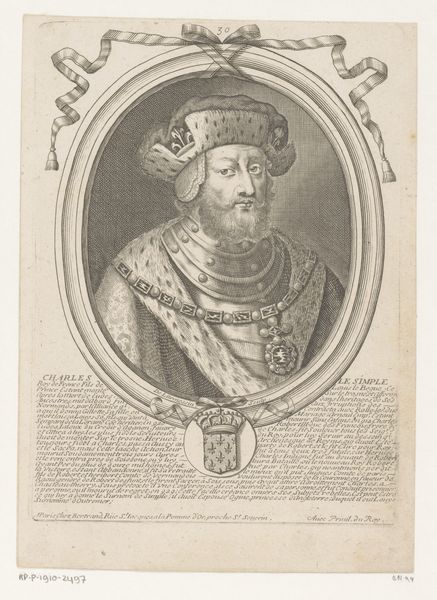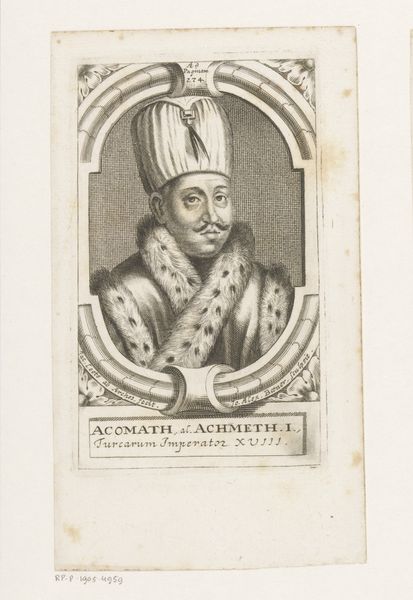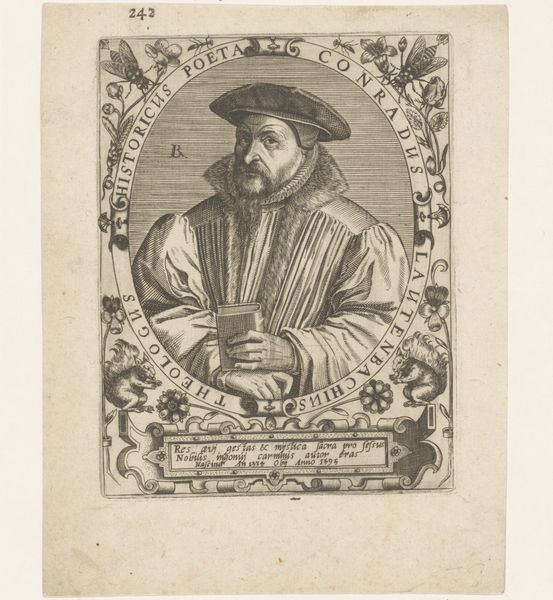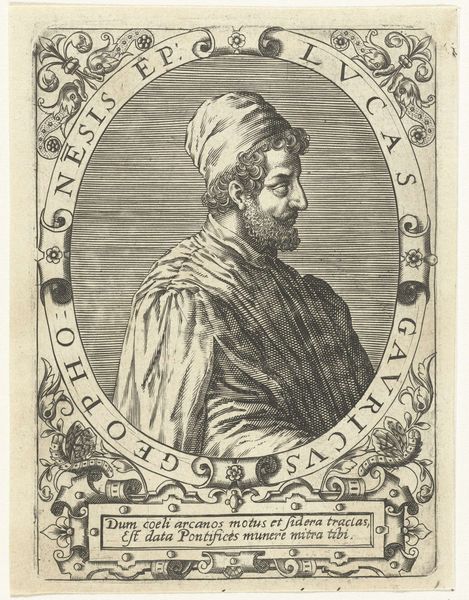
print, engraving
#
portrait
#
baroque
# print
#
figuration
#
islamic-art
#
history-painting
#
engraving
Dimensions: height 150 mm, width 96 mm
Copyright: Rijks Museum: Open Domain
Curator: Here we have an engraving dating from the late 17th to early 18th century. It's titled "Portret van Hassan Aga" and the artist is Elias Nessenthaler. It depicts Hassan Aga, likely a prominent figure of his time. Editor: My first thought is one of formality and perhaps a hint of calculated intimidation. The gaze is direct, and the textures rendered by the engraving technique emphasize power and authority. It’s incredibly detailed! Curator: Engravings, especially in this era, were often commissioned. The act of reproducing portraits democratized access to images of power, circulating them for political and social purposes. Nessenthaler's skill highlights the status of his subject. Think about the labor and the meticulous process required to create such fine lines. Editor: The symbolism is fascinating. The turban, of course, denotes status within a specific cultural and religious context. The scepter or staff he holds further emphasizes his position, and the chain perhaps alludes to connection and allegiance. It’s loaded with markers of power and affiliation, aimed at communicating clearly. Curator: Indeed. The chain itself is interesting; consider its materiality. Metalwork of that caliber signifies wealth and access to skilled craftspeople. Also consider the act of printing itself. Engravings were crucial for disseminating information and shaping perceptions of foreign figures like Hassan Aga. It speaks to a European audience. Editor: Absolutely. This portrait also participates in a longer history of representing the 'Other'. The "exoticism," for lack of a better word, is carefully constructed through recognizable visual cues that would have resonated with European viewers. These objects communicate much beyond literal representation, serving to reinforce certain cultural biases and curiosities. Curator: Precisely! What’s being produced here is not merely a likeness but a controlled image circulating within a very specific economic and social system. And that text beneath the image, "Assan Aga... in Turcarum Imperatoris Perniciem Coniuratus Hostis", that's some serious political positioning right there, labelling him a "pernicious conspirator" against the Turkish emperor. Propaganda! Editor: A hostile political backdrop definitely contextualizes the artwork, framing it for its audience and imbuing all of these individual visual elements with an extra, historical valence. Thank you, that insight transforms how I read the image. Curator: It’s really all about context and circulation. Looking at this portrait through those lenses allows for a more nuanced understanding. Editor: And recognizing the loaded visual language helps to dissect enduring stereotypes in visual culture.
Comments
No comments
Be the first to comment and join the conversation on the ultimate creative platform.
